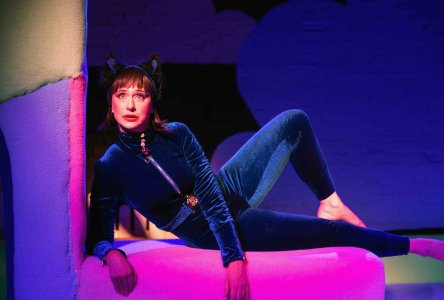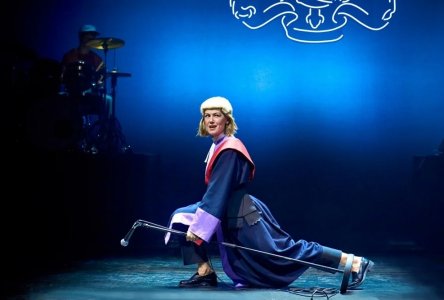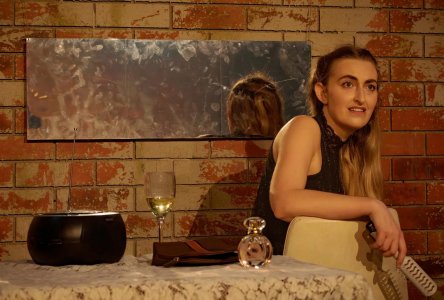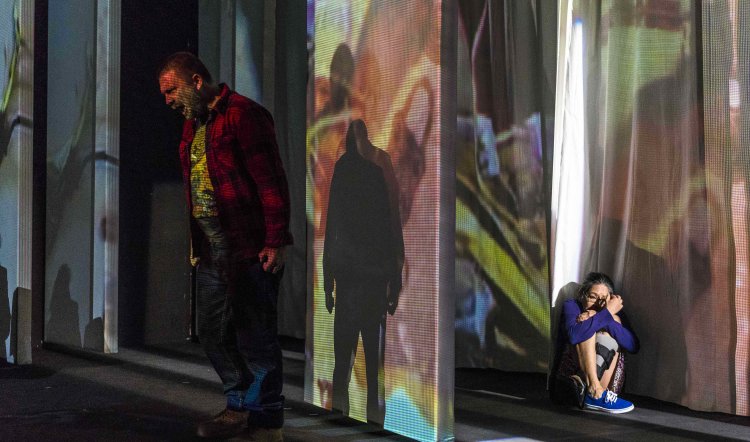
THIS HOUSE IS MINE
THIS HOUSE IS MINE, Darlinghurst Theatre Company presents a Milk Crate Theatre Production at the Eternity Playhouse, 12 March-22 March 2015. Photography by Patrick Boland, above: Chris Barwick and Fabiola Meza; right: John McDonnell.
It would be easy for the average comfortable theatre-goer to be put off seeing This House Is Mine. After all, it’s about above-averagely uncomfortable themes that rarely touch theatre-goers except in passing: dropping a coin in a cup, turning away and not dropping a coin in a cup; avoiding the underpass or corner of the park where unsavoury people hang out; reading and tut-tutting about the latest murder of a woman by her husband. And isn't that what this play is about?
Well yes, and no. Written and produced by Maree Freeman and directed by Paige Rattray, This House Is Mine is absorbing, exciting, interesting, funny and shocking theatre. It’s also about a rich parade of humanity and human stories shared generously and unseen by dozens of those involved in the Milk Crate Ensemble and performed by others of that group.
As well as the everyday stories of some of Sydney’s homeless people (according to the program there are 20,000 on the city’s streets on any given night) there is a recurring motif. It is the other side of the idea that – I think therefore I am. In this instance it’s a much more interesting idea: I remember therefore I am. We are the sum of our memories, a cache of the past that makes up the present and therefore the future too. When those memories are good, or mainly good, then it’s possible that life is sweet. When they are not...
The show is sophisticated and fast-moving with an ever-changing video backdrop (Sarah Emery, consultant Sean Bacon), soundscape (Tom Hogan) and a single TV monitor from which are projected a series of talking heads who briefly fill in a snippet or aspect of their story. The play opens with two performers, Veronica Flynn and Matthias Nudl, facing each other mutely across the stage as their words are heard in voice-over. It’s a powerful symbol of what underlies many relationships: failure to communicate and the yearning to communicate.
Flynn is a dynamic stage presence and particularly strong – funny and infuriating – in a meeting sequence where each participant is supposed to share his or her thoughts and experience but none can get a word in edgeways. It’s also notable for the introduction to the mind of an abusive spouse (Chris Barwick) whose self justification and refusal to face reality is first seen in this relatively benign setting; then later in full flow at the locked front door of the house; on the other side his battered wife (Fabiola Meza) cowers, but is unable to leave.
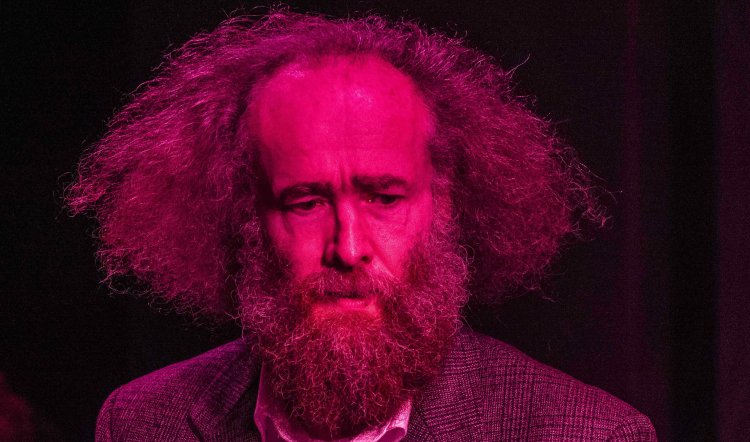
At the other end of the life and age scale are Contessa Treffone and Rach Williams. One is the daughter of the abused and the abuser and was thrown out of home by her father. She cannot understand why her mother won't leave him and come and stay with her; her mother cannot understand why her daughter cannot understand. The stalemate is intense. And the other half of the equation is her dilemma and dismay as her girlfriend (Treffone, a NIDA graduate and the one professional actor in the onstage troupe) slowly descends before our very eyes into schizophrenia.
And then there’s the gentle psychiatrist (John McDonnell) who cannot understand why his long suffering daughter isn't his wife and why she keeps packing up the contents of their home, and gradually we discover that his wife is long gone to France and he is in a home and his life is an illusion. It’s a vivid and sobering story from the other end of the social scale.
But wait: this is not all about despair and horror. Not only are there glimpses of light and possibility but also there is so much humour and humanity it bubbles over and the abundance of exuberant theatricality and talent is inspiring. This House Is Mine peels back the layers of ignorance and prejudice many of us have about mental illness and its too-frequent knock-on effects: violence, homelessness and poverty. In doing that, if nothing else, it performs a priceless public service, but that’s not it. There is real hope and determination offered by this project and its end result and that hope is for kindness, laughter, love and generosity – all given by the Ensemble in the production and there to be taken by the audience and – finally – understood.

